Preparing your blog post
Preparing your blog post
Industrial and commercial chiller systems are the backbone of many processes where reliable cooling is critical. Whether supporting manufacturing, data centres, food production, or medical facilities, chillers must maintain correct process temperature and efficient operations. Any failure within the refrigeration cycle, water circulation, or control systems can trigger alarms, reducing cooling capacity and impacting productivity. This long-form guide explores common alarm causes, with a deep dive into low-pressure alarms, high-pressure alarms, insufficient cooling water flow, refrigerant leakage, and other common issues, along with solutions to maximise system performance, minimise downtime, and control energy costs.
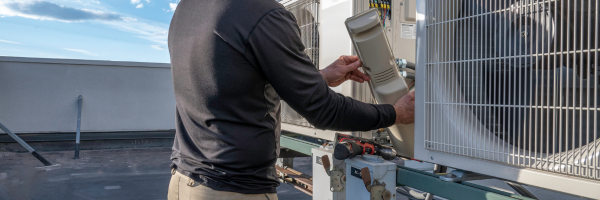
An industrial chiller system works by circulating refrigerant through a refrigeration cycle, absorbing heat from a process line and rejecting it to either water (in water-cooled chillers) or air (in air-cooled chillers).
Key components include:
The compressor is the heart of the chiller system, responsible for driving the circulation of refrigerant throughout the refrigeration cycle. It compresses the refrigerant vapour, increasing its pressure and temperature, producing high-pressure steam, which enables it to flow through the condenser. By maintaining the refrigerant pressure differential, the compressor ensures efficient heat transfer and proper operation of the entire system.
The evaporator plays a crucial role in absorbing heat from the process fluid, effectively lowering its temperature to the desired level. Inside the evaporator, the low-pressure refrigerant absorbs heat from the water or other fluid circulating through the process line, causing the refrigerant to evaporate. The evaporator absorbs heat directly from the cooled object via refrigerant circulation, facilitating efficient heat exchange. This phase change is fundamental to the cooling process, enabling the transfer of thermal energy away from the process fluid.
The condenser is responsible for rejecting the absorbed heat from the refrigerant to the surrounding environment. In water-cooled chillers, the condenser transfers heat to cooling water, which then carries it away, often to a cooling tower. In air-cooled chillers, the condenser dissipates heat directly to the ambient air via air flow over finned coils. The high-pressure steam from the compressor is condensed into a high-pressure liquid in the condenser before being depressurised and vaporised again. Efficient heat rejection in the condenser is vital for maintaining the refrigerant cycle and preventing high-pressure buildup.
The expansion valve regulates the flow and pressure of the refrigerant entering the evaporator. By controlling the amount of refrigerant released, the valve ensures that the evaporator receives the correct refrigerant volume at a low pressure, allowing for effective heat absorption. Proper functioning of the expansion valve is essential for maintaining system balance and preventing issues such as low-pressure faults or insufficient cooling.
The water pump ensures the continuous circulation of water through the chiller outlet and process line. This circulation is essential for carrying heat away from the process and delivering cooled water back to the point of use. Adequate water flow maintained by the pump supports efficient heat exchange in the evaporator and helps avoid problems related to insufficient cooling water flow.
This system manages the overall operation of the chiller, including monitoring temperatures, pressures, and flow rates. It controls alarms, initiates shutdowns when necessary, and performs corrective actions to protect the chiller from damage. The electrical automatic control system plays a critical role in maintaining safe and efficient operation, ensuring that the chiller responds appropriately to changing conditions.
Correct chiller operation requires a precise balance across refrigerant circulation, water flow, and heat load. Any imbalance in these components can lead to issues such as insufficient cooling, increased energy consumption, and repeated alarm resets. Maintaining this balance through proper operation and regular maintenance is key to maximising system performance and minimising downtime.
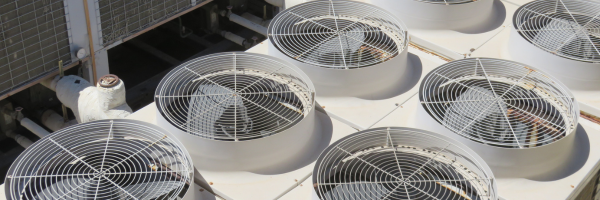
Chiller alarms are protective measures designed to prevent damage to the refrigeration system. Frequent alarms indicate underlying problems that require troubleshooting.
To prevent these alarms and maximise system performance, it is essential to ensure the correct operation of the chiller and perform regular corrective maintenance. These practices help maintain reliability, energy efficiency, and the longevity of the system.
A low-pressure alarm is one of the most common alerts in industrial chiller systems, signalling that the suction pressure within the refrigeration system has dropped below the safe operating range. This condition can arise from several underlying issues.
One frequent cause is refrigerant leakage, which reduces the overall refrigerant levels and impairs circulation throughout the system, potentially resulting in a low-pressure fault. Without adequate refrigerant, the chiller cannot absorb sufficient heat, leading to decreased cooling capacity and triggering the alarm. Additionally, insufficient coolant volume, insufficient pumping, or trapped air within the system can disrupt the flow of refrigerant and water, causing pressure drops and possibly leading to a low-pressure fault.
Another common cause is restricted refrigerant flow, often due to expansion valve failure, a partially closed valve, or a blocked filter drier. These restrictions impede the refrigerant’s movement, preventing it from reaching the evaporator at the correct pressure and volume.
Insufficient pumping or insufficient cooling water flow also contributes to low-pressure alarms by reducing the heat absorption capability of the evaporator, which is critical for maintaining proper refrigerant evaporation. In air-cooled chillers, poor heat dissipation caused by clogged condenser fins, dirty filters, or fan malfunctions can similarly result in low-pressure conditions.
Finally, an insufficient heat load can prevent the refrigerant from evaporating properly, leading to abnormal pressure readings and a potential low-pressure fault.
To address a low-pressure alarm, the first step is to check for refrigerant leaks. If a leak is found, then make the necessary repair and pressure test it and recharge refrigerant levels.
Inspecting the expansion valve and solenoid valve coil for faults is also essential, as malfunctioning components can restrict refrigerant flow. Ensuring the water pump operates correctly and that water circulation is adequate will help maintain proper heat exchange in the evaporator and prevent insufficient water flow.
It is equally important to bleed any trapped air from the water circuits to maintain consistent water flow and avoid pressure irregularities. Additionally, assessing the process load to verify that it matches the chiller’s capacity can prevent issues related to insufficient heat load.
Once the root cause has been resolved, resetting the low-pressure protection relay allows the system to resume normal operation safely.
A high pressure alarm signals that the condenser pressure within the chiller system has risen above safe operating limits, posing a risk to the equipment’s integrity and performance. This alarm can occur in both water-cooled and air-cooled chillers, and it typically indicates that the system is struggling to reject heat effectively.
In water-cooled chillers, one common cause is insufficient cooling water flow, which may result from pump failure, blocked strainers, or partially closed valves. When the cooling water flow is inadequate, the condenser cannot dissipate heat efficiently, causing the refrigerant pressure to rise dangerously. Similarly, in air-cooled chillers, poor heat dissipation can be caused by dirty or clogged condenser fins, malfunctioning fans, or restricted airflow around the unit. These issues prevent the condenser from releasing heat into the surrounding air, leading to elevated pressures.
Another frequent cause of high-pressure alarms is an excess refrigerant charge within the system. Overcharging increases the amount of refrigerant that must be condensed, raising the pressure in the condenser beyond design limits. Additionally, restricted refrigerant flow within the condenser, due to blockages or malfunctioning components, can cause pressure to build up. Environmental factors such as high ambient temperatures also play a role by increasing the heat load beyond the chiller’s capacity to dissipate it, contributing to high condenser pressures.
To resolve a high-pressure alarm, it is essential to inspect and clean the condenser coils or fins thoroughly to improve heat exchange efficiency. Checking the cooling water circuits for any restrictions, trapped air, or flow issues is critical in water-cooled systems. Adjusting the refrigerant charge to the correct levels ensures the system operates within safe pressure ranges. It is equally important to verify that fans, pumps, and associated electrical automatic controls are functioning properly to support effective cooling.
Finally, improving ventilation around air-cooled chillers can enhance airflow and prevent heat buildup, reducing the likelihood of high-pressure alarms.
A high temperature alarm indicates that the process temperature or the chiller outlet temperature has exceeded the preset safety limits, signalling a potential issue that could compromise the cooling system’s effectiveness and the protected process. This alarm serves as an early warning to operators that the chiller is unable to maintain the desired temperature, which can lead to overheating of critical equipment or products if not addressed promptly.
Several factors can cause a high temperature alarm. One common cause is insufficient water flow through the evaporator, which reduces the heat exchange capacity and prevents the system from adequately removing heat from the process fluid. Another frequent issue is insufficient refrigerant circulation, which may result from refrigerant leaks or malfunctioning expansion valves that restrict the refrigerant flow and reduce cooling efficiency. Additionally, a high process heat load that exceeds the chiller’s cooling capacity can overwhelm the system, causing temperatures to rise beyond safe thresholds. Faulty temperature sensors or poor operating practices, such as incorrect calibration or ignoring maintenance schedules, can also lead to erroneous temperature readings or inadequate response to changing conditions.
To resolve a high temperature alarm, it is essential first to verify the proper function and calibration of temperature sensors to ensure accurate monitoring. Increasing water circulation by inspecting and maintaining the water pump and related components helps restore adequate flow through the evaporator, improving heat exchange.
Checking the expansion valve for correct adjustment and ensuring refrigerant levels are within recommended ranges supports optimal refrigerant circulation.
Finally, reviewing the process heat load in relation to the chiller’s capacity and implementing operational adjustments or system upgrades as necessary can prevent recurring high temperature conditions and maintain reliable cooling performance.
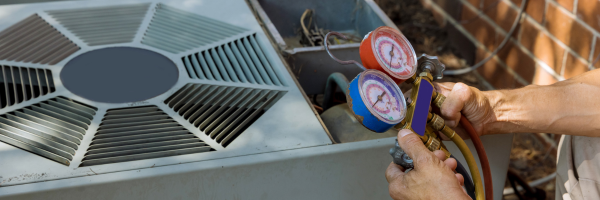
Chillers depend heavily on their electrical automatic control systems to ensure smooth and efficient operation. These systems monitor and regulate various parameters, and any faults within them can trigger alarms that may disrupt chiller performance.
One common electrical-related issue is circuit breaker trips, which often occur due to overcurrent conditions caused by faulty motors or pumps. Additionally, a blown fuse can prevent the chiller from starting and should be checked during troubleshooting. Loose wiring is another common electrical issue that can disrupt chiller operation, so all wiring connections should be inspected and tightened as needed. When a motor or pump draws excessive current, the circuit breaker trips to protect the electrical system, but this interruption can halt chiller operation and necessitate troubleshooting to identify the root cause.
Another frequent source of electrical alarms involves sensor faults. Sensors play a critical role in monitoring temperatures, pressures, and flow rates throughout the chiller system. Faulty or malfunctioning sensors can produce false alarms or cause improper shutdowns by providing inaccurate data to the control system. This can lead to unnecessary interruptions or, conversely, failure to detect genuine issues, both of which compromise the chiller’s reliability and efficiency.
In some cases, alarm reset failures may occur, where the system continues to indicate a problem even after attempts to reset the alarm have been made. This persistence often points to unresolved underlying issues or faults within the control system itself, requiring a thorough inspection to prevent repeated disruptions.
To address these electrical and control alarms, it is essential to conduct a detailed inspection of motor loads and replace any faulty pumps or fans that may be causing overcurrent conditions. Faulty sensors should be identified and replaced promptly, followed by recalibration of the control systems to ensure accurate monitoring. Maintaining proper electrical circuit and control board upkeep is also crucial to prevent recurring faults and ensure the chiller system operates reliably and efficiently.
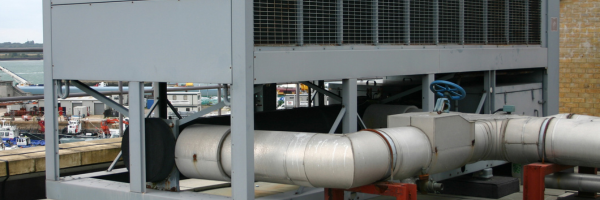
Industrial chillers commonly face several specific problems that can significantly affect their performance and reliability. One of the most critical issues is refrigerant leakage, which reduces the refrigerant circulation within the system. This reduction directly lowers the cooling efficiency, as there is insufficient refrigerant to absorb and transfer heat effectively. Detecting and repairing leaks promptly is essential to maintain optimal system operation and prevent further damage.
Another frequent cause of chiller faults is expansion valve failure. The expansion valve controls the flow of refrigerant into the evaporator, and if it malfunctions, it can restrict refrigerant flow. This restriction causes low-pressure faults, as the evaporator does not receive the proper refrigerant volume needed for effective heat absorption. Timely inspection and maintenance of the expansion valve helps avoid these issues and ensures stable system pressure.
Solenoid valve coil faults also disrupt the refrigeration cycle by preventing refrigerant from circulating through the correct channels. A faulty coil may fail to open or close the valve properly, leading to pressure imbalances and reduced cooling capacity. Regular testing and replacement of defective solenoid valve coils are necessary to maintain smooth refrigerant flow and prevent system alarms.
Insufficient water flow is another critical problem that impacts heat exchange efficiency. When the water pump fails or water circuits become blocked or trapped with air, the reduced water circulation diminishes the chiller’s ability to remove heat from the process fluid. This inefficiency results in increased process temperatures and potential overheating. Ensuring proper water flow through regular pump maintenance and bleeding of air from water lines is vital for effective cooling.
Trapped air in water circuits can further restrict water flow, compounding cooling inefficiencies. Air pockets reduce the effective cross-sectional area for water circulation, leading to uneven heat transfer and higher operational stress on pumps. Routine system checks to identify and eliminate trapped air improve water circulation and overall chiller performance.
Pump failure is a significant cause of inadequate water circulation throughout the entire chiller system. When pumps malfunction, water flow stops or drops below required levels, severely limiting heat exchange and causing temperature alarms. Prompt diagnosis and repair or replacement of faulty pumps are critical to restoring proper water circulation and maintaining system stability.
Finally, poor operating practices can exacerbate chiller issues and increase energy costs. Running chillers with insufficient heat load, neglecting scheduled maintenance, or ignoring early warning alarms can lead to component damage and inefficient energy use. Adhering to manufacturer guidelines, performing regular inspections, and responding quickly to alarms help prevent costly failures and optimise chiller operation.
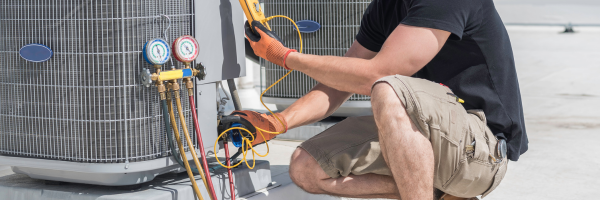
When chiller performance declines, the system often compensates by running longer or working harder, which inevitably leads to excessive energy consumption. Several factors commonly contribute to this inefficiency. One major cause is dirty condenser or evaporator surfaces, which reduce the effectiveness of heat exchange by limiting airflow or water flow over these critical components. Additionally, restricted refrigerant flow, whether due to blockages, malfunctioning valves, or improper refrigerant charge, can impair the refrigeration cycle and force the system to consume more energy to maintain desired temperatures. Poor heat dissipation, often caused by clogged condenser fins or inadequate cooling water flow, further exacerbates the problem by preventing the system from releasing heat efficiently. Insufficient coolant volume in the water circuits can also reduce heat transfer efficiency, forcing the chiller to operate longer to achieve the required cooling. Lastly, operating chillers at part-load conditions without adjusting the system settings can lead to unnecessary energy use, as the equipment may not be optimised for lower loads.
To enhance energy efficiency, it is essential to maintain clean heat exchange surfaces by regularly cleaning condenser coils and evaporator tubes to ensure unobstructed airflow and water flow.
Monitoring the temperature difference across the evaporator and condenser provides valuable insight into the system’s heat exchange effectiveness and can help identify emerging issues before they escalate. Regular checks of refrigerant levels and pressures are critical to maintaining optimal refrigerant circulation, preventing both undercharge and overcharge conditions that negatively impact energy use.
Matching the chiller’s cooling capacity to the actual heat load requirements ensures the system operates within its most efficient range, avoiding energy waste associated with oversized or undersized equipment. Finally, adhering to proper maintenance practices, including timely inspections, cleaning, and component testing, helps sustain optimal performance and prevents energy losses caused by deteriorating system conditions.
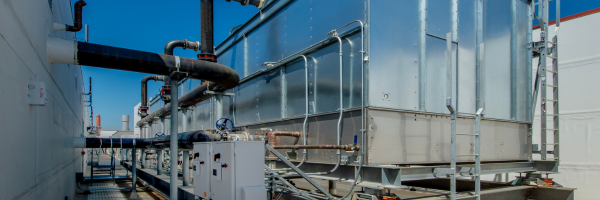
To avoid recurring chiller alarms and extend the lifespan of your equipment, it is essential to establish a proactive and comprehensive maintenance programme. Regular monitoring and upkeep help identify potential issues before they escalate into costly failures, ensuring the chiller system operates smoothly and efficiently.
Weekly inspections should focus on critical parameters such as water flow rates, refrigerant pressures, and the temperature difference across key components like the evaporator and condenser. Monitoring these values helps detect anomalies early, such as insufficient water flow or refrigerant leaks, which can trigger alarms and reduce cooling capacity. Prompt attention to these metrics enables operators to maintain optimal system balance and prevent performance degradation.
Monthly maintenance activities involve more detailed tasks, including cleaning filters to ensure unobstructed airflow and water circulation. It is also important to check the electrical automatic control systems for proper functioning, verifying that sensors, alarms, and control circuits are responsive and accurate. Additionally, confirming that alarm resets are working correctly prevents persistent alerts from masking underlying problems and allows the system to resume normal operation after faults are addressed.
Quarterly checks should include thorough refrigerant leak detection to maintain adequate refrigerant levels and prevent efficiency losses. Testing solenoid valve coils during these intervals ensures that valves open and close as required, maintaining proper refrigerant flow throughout the system. Adjustments to the expansion valve may also be necessary to optimise refrigerant delivery to the evaporator, supporting stable pressure and temperature conditions.
Annual servicing is a comprehensive review of the entire chiller system. This includes a full system audit to assess component condition and performance benchmarking against manufacturer specifications. Reviewing process line integration ensures that the chiller operates in harmony with the broader industrial setup, identifying any mismatches or inefficiencies that could impact cooling effectiveness. Such in-depth servicing helps extend equipment life, reduce downtime, and maintain the highest levels of cooling performance.
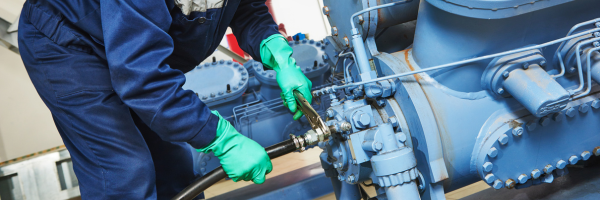
To maximise system performance, operators must adhere to best practices that ensure every component of the chiller system functions harmoniously. One crucial aspect is maintaining correct chiller operation by carefully monitoring water circulation, refrigerant flow, and the balance of heat exchange. This balance is essential because any disruption can lead to inefficient cooling, increased energy consumption, and potential equipment damage. Regular monitoring helps identify early signs of imbalance, allowing for timely corrective actions that preserve the chiller’s capacity and reliability.
Optimising cooling systems involves matching the chiller’s capacity precisely to the process load it supports. An oversized or undersized chiller can cause inefficiencies, such as increased energy use or insufficient cooling. By accurately assessing the cooling demands of the industrial process and selecting or adjusting the chiller capacity accordingly, operators can ensure that the system runs at peak efficiency. This alignment also helps prevent frequent cycling and excessive wear on components, contributing to a longer equipment lifespan.
Maintaining efficient cooling requires a proactive approach that includes regular cleaning, thorough inspections, and comprehensive system checks. Dust, debris, and scale buildup on condenser coils, evaporators, and filters can significantly reduce heat exchange efficiency, leading to higher operating pressures and alarm triggers. Scheduled maintenance routines that address these issues help sustain optimal airflow and water flow, preventing performance degradation and reducing the risk of unexpected downtime.
Early detection of common issues such as refrigerant leakage, pump failure, and faulty sensors is vital for reducing downtime and avoiding costly repairs. Implementing diagnostic tools and monitoring systems enables operators to identify these problems before they escalate. Prompt repairs or replacements ensure the refrigeration cycle and water circulation remain uninterrupted, preserving cooling capacity and protecting sensitive industrial processes.
Finally, controlling energy costs is an ongoing priority that requires addressing factors like restricted refrigerant flow, poor heat dissipation, and excessive energy consumption as soon as they arise. By maintaining proper refrigerant levels, ensuring adequate water flow, and keeping heat exchange surfaces clean, operators can reduce the workload on the chiller system. This not only lowers energy bills but also contributes to environmental sustainability by minimising unnecessary power usage.
Together, these practices form a comprehensive strategy for maximising chiller system performance, enhancing reliability, and achieving efficient, cost-effective cooling operations in demanding industrial environments.

At Refcool, we’re more than a chiller provider; we’re your cooling partner. With over 30 years of experience, we design, build, and service bespoke chillers tailored to your exact needs. Whether you require water‑cooled, air‑cooled, or modular systems, we make sure your chiller runs efficiently and reliably.
We don’t just install and walk away. Our team offers full preventative maintenance, rapid reactive support, and nationwide coverage. With our Safe Contractor‑ and F‑Gas‑certified engineers, you can count on us for breakdown response, routine servicing, and emergency hire whenever you need it. We’re committed to energy efficiency too, helping you save on running costs while improving sustainability.
No matter your operation, 24/7 production lines or precise temperature-controlled processes, we’re here to ensure your system performs exactly when it matters most. At Refcool, keeping your business cool is what we do best.
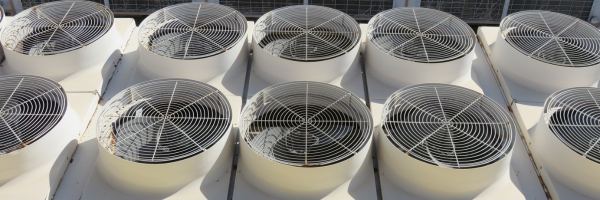
Chiller alarms should not be ignored as they are essential for protecting equipment, maintaining cooling efficiency, and safeguarding industrial processes. Whether dealing with low-pressure alarms, high-pressure alarms, insufficient water flow, or refrigerant leaks, proper operation and maintenance are critical to reliable and efficient operations.
Refcool recommends regular inspections, proactive troubleshooting, and adherence to proper maintenance practices to keep cooling systems running at optimal performance. By understanding alarm causes and applying corrective solutions, operators can minimise energy consumption, maximise system performance, and ensure uninterrupted industrial processes.
The most common causes include refrigerant leakage, expansion valve failure, insufficient cooling water flow, pump failure, and faulty sensors. These issues disrupt refrigerant circulation, water flow, or control systems, triggering alarms such as low-pressure or high-pressure warnings.
Regular maintenance is key. This includes checking for refrigerant leaks, ensuring the expansion and solenoid valves function properly, maintaining adequate water flow by servicing pumps and bleeding trapped air, and verifying that the process load matches the chiller’s capacity.
First, verify temperature sensor accuracy and calibration. Then check water circulation and refrigerant levels, inspect the expansion valve, and assess whether the process heat load exceeds the chiller’s capacity. Addressing these factors helps restore normal temperature conditions.
Correct sizing ensures the chiller operates efficiently without excessive cycling or energy waste. An oversized chiller may lead to frequent starts and stops, while an undersized unit won’t meet cooling demands, both causing potential alarms and increased operational costs.
Proper maintenance keeps heat exchange surfaces clean, refrigerant levels optimal, and water flow adequate. This reduces strain on the refrigeration cycle and prevents excessive energy use, helping to maintain efficient cooling and lower operational costs.